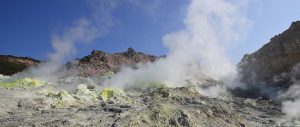What’s the big idea?
Forests of synthetic “trees”, designed to capture and store carbon dioxide, could be used to effectively offset climate-warming emissions and help cool the planet.
How would it work?
Plastic ion-exchange membranes can capture carbon dioxide in air. This technique is already used in water purifiers and ventilation systems on submarines, but it has never been applied for atmospheric carbon capture.
Scientists, including Wallace Broecker and Klaus Lackner, claim that passing humid air across the membranes would make recharging them a carbon-neutral process: humid conditions would greatly reduce the energy cost of removing the captured carbon. Consequently, even taking emissions produced by the removal process into account, there would remain a net removal of carbon dioxide from the atmosphere. Once released, this carbon dioxide could be chemically bonded with carbon-loving ultramafic rocks and sequestered permanently underground. This breakthrough, its proponents say, effectively opens the door for the kind of large-scale capture and storage once dismissed as impossible.
What are the risks?
Unlike many geoengineering proposals, the scheme does not attempt to manipulate fragile and unpredictable ecological processes in the pursuit of its ends. Proponents of “scrubbing” argue that since all it does is to remove what humans have put there in the first place, the potential side-effects are few.
However, such schemes were criticsed in a Greenpeace report in May 2008 for diverting attention away from the more pressing issue of emissions reduction. The green group argues that this kind of unproven technology is the perfect smokescreen for polluters seeking an excuse to carry on with business as usual.
There also remain considerable questions about cost, scale and timescale. A working prototype “tree” is still two years away. Lackner himself admits that it would take 10 million of them (produced at no small environmental cost) to capture even a tenth of annual emissions. With fossil fuel use expanding rapidly across the developing world, successful implementation might not arrive quickly enough. The question of storage still presents a substantial hurdle.
Our verdict
Lack of even a working prototype means it remains hard to predict what kind of impact the technology may ultimately have. Nevertheless, the principle itself is substantially less risky than many proposed geoengineering solutions; it does not deserve to be dismissed out of hand before its feasibility has been established.
Homepage image by jonathan mcintosh



